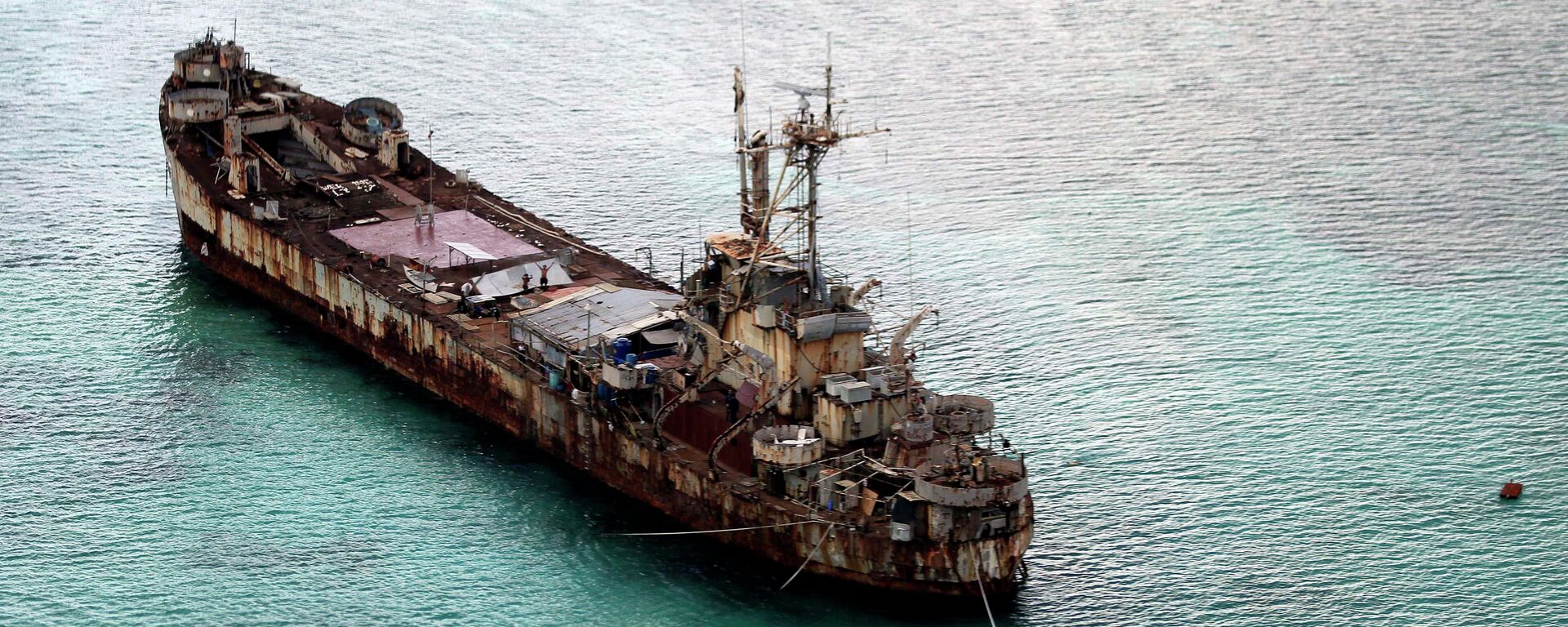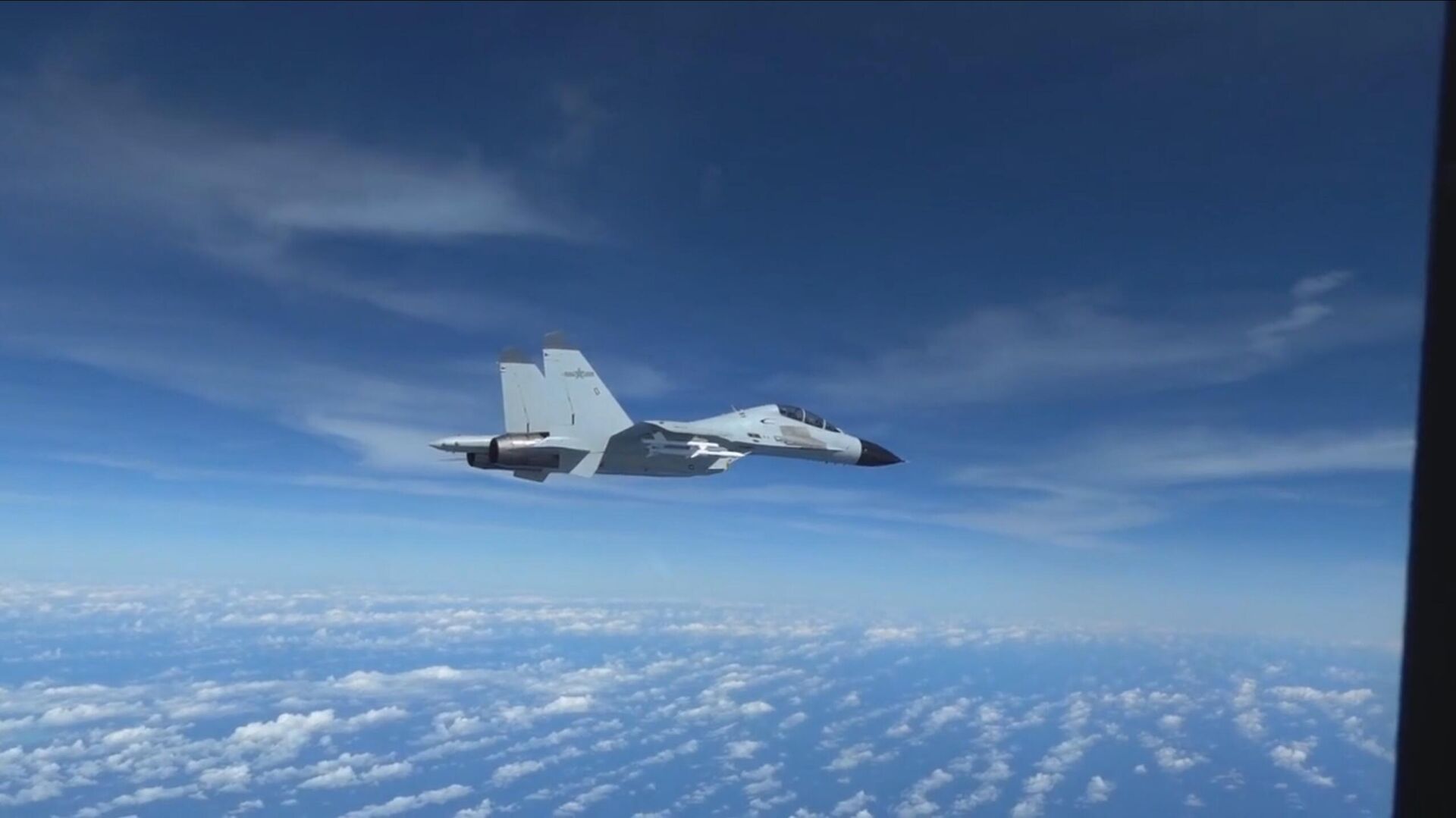PLA Fighter Jet Confronts US Navy Spy Plane With CNN Crew Aboard Over South China Sea
Subscribe
A recent report by US news company CNN included encounters with Chinese People’s Liberation Army (PLA) aircraft and warships while riding along in a US Navy P-8A Poseidon maritime patrol aircraft over the South China Sea.
According to their report, the Poseidon, which is derived from a Boeing 737 airliner airframe and carries a variety of monitoring equipment as well as anti-ship and anti-submarine torpedoes, was first challenged by a J-11 interceptor about 30 miles from the Paracel Islands.
“American aircraft. Chinese airspace is 12 nautical miles. Not approaching any more or you bear all responsibility,” the Chinese pilot told the Poseidon pilot over the radio, according to the report.
The J-11 soon pulled alongside the US aircraft, sitting about 500 feet off its port side for about 15 minutes. The jet was carrying air-to-air missiles, the report said.
“I’d say its another Friday afternoon in the South China Sea,” Navy Cmdr. Marc Hines told the CNN crew after they voiced concern about the incident.
Later, the same crew encountered the PLA Navy warship Changsha, a Type 52D guided missile destroyer, near claimed Philippine waters and descended to the low altitude of 1,000 feet. The Changsha’s crew evidently interpreted this as a potentially hostile action, as maritime patrol aircraft drop to low altitudes to fire their anti-ship torpedoes.

14 February 2023, 23:17 GMT
“US aircraft. US aircraft. This is Chinese naval warship 173. You are approaching to me at low altitude. State your intention over,” the Changsha’s bridge told the Poseidon pilot over the radio.
However, the Poseidon then tried to assuage the Changsha’s fears, saying it would keep a safe distance.
“US aircraft. US aircraft. This is Chinese naval warship 173. You are clearly endangering my safety. You are clearly endangering my safety,” the Chinese ship says.
“I am a United States military aircraft. I will maintain a safe distance from your unit,” the Poseidon pilot replies. There was no reply from the Changsha after that.
Hines later said the interactions were “professional” and he hoped to keep things that way. A similar, but much more intense encounter between a US Navy EP-3E Aries signals intelligence aircraft and a PLA J-8II interceptor in 2001 resulted in the two planes colliding. The Chinese pilot died and the American plane was forced to land on the Chinese island of Hainan, where the crew were interrogated before being returned to the US.
Contentious Waterway
China has claimed sovereignty over the Paracel Islands and three other island chains in the South China Sea - claims disregarded by the United States and which overlap with claims by several other nations, including Vietnam, the Philippines, and Malaysia. US patrols in the area have aimed to flout those claims - actions the US calls “freedom of navigation operations” - which often leads to tense confrontations.
In the late 2010s, the US military sharply increased its surveillance flights over waters off the Chinese coast, especially over the South China Sea, to sometimes several flights per day. These missions included electronic intelligence aircraft, specialized planes for observing radar sites, and maritime patrol planes like the Poseidon.
According to the South China Sea Probing Initiative (SCSPI), a think tank connected to the University of Beijing, US land-based reconnaissance aircraft flew 64 sorties over the waterway in January 2023 - a slight decrease from January 2022, they noted.
#Statistics: In January, 2023, 64 sorties of US military land-based reconnaissance aircraft were spotted over the #SouthChinaSea according to ADS-B data, decreasing slightly compared with the number in December last year. pic.twitter.com/51ty2aeIOC
— SCS Probing Initiative (@SCS_PI) February 4, 2023
The majority of the flights were by P-8A Poseidons; others included RC-135S Combat Sent and RC-135V Rivet Joint aircraft, EP-3E Aries, and E-4B Nightwatch aircraft, the lattermost of which is a “doomsday plane” designed to carry US leadership aloft in the event of a nuclear war. Its presence in the area is not explained.
At times, the US spy planes took measures to disguise their identities, performing “spoofs” of the ICAO hex codes used to identify them to other aircraft in order to seem like airliners from various nations.


